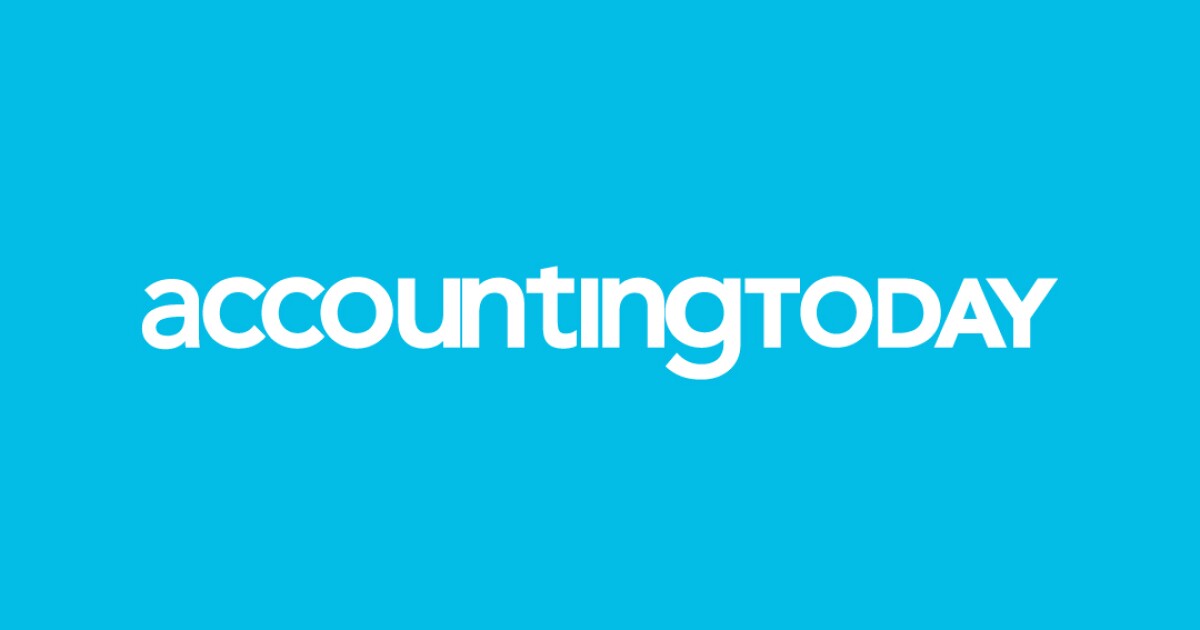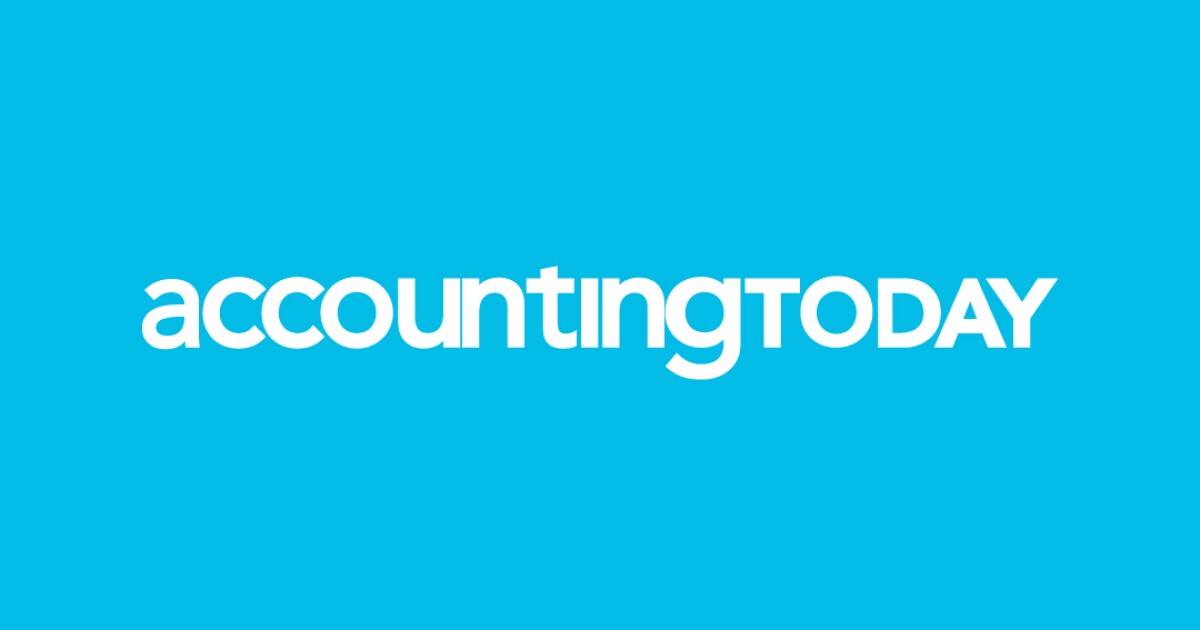Accounting
Tax Fraud Blotter: Unhealthy habits
Published
3 weeks agoon

Insult to injury; lack of progress; gone fishing; and other highlights of recent tax cases.
Los Angeles: Christopher Kazuo Kamon, former longtime head of the accounting department at a now-shuttered personal injury law firm, has been sentenced to 10 years and a month in prison for enabling the embezzlement of millions of dollars from the firm’s clients and for embezzling money from the firm itself.
Kamon, formerly of Encino and Palos Verdes, California, and who was residing in the Bahamas at the time of his November 2022 arrest, was also ordered to pay $8,903,324 in restitution. He pleaded guilty in October.
From 2004 until December 2020, Kamon was the head of the accounting department at the law firm Girardi Keese. He worked closely with co-defendant Thomas Vincent Girardi as well as other senior lawyers at the law firm.
In December 2020, Girardi Keese’s creditors forced the firm into bankruptcy proceedings. The firm dissolved in January 2021 and the State Bar of California disbarred Girardi in July 2022. Girardi has since been found guilty of four counts of wire fraud; he awaits sentencing.
Akron, Ohio: Businessman Michael Roberts, 38, of Mentor, Ohio, has been convicted of not paying federal employment taxes.
He was the executive director and co-owner of Progressive Alternatives, an in-home care business that served individuals with developmental disabilities. The business was initially purchased by Roberts’s spouse, Larry Keith Gildersleeve III, 43, also of Mentor, in February 2011. Eventually Roberts assumed responsibility for the payroll and day-to-day financial operations and assumed the title of co-owner in 2014.
Investigators found that Progressive’s records showed that payroll checks issued by Roberts reflected appropriate withholdings; the withholdings were also reflected on W-2s the employees received, but it was also discovered that Progressive never filed W-2s for employees nor submitted 941s with quarterly payments.
In late 2017, an employee who was preparing to retire was informed by the Social Security Administration that Progressive had not paid over payroll taxes to the IRS. Although Roberts was made aware of this and taxes were withheld from employee paychecks, he did not submit payments to the IRS.
Roberts was determined to be guilty of not paying taxes for quarters ending Dec. 31, 2017, and March 31, 2018, for a total of $226,687.25. Gildersleeve pleaded guilty in October to eight counts of failure to account for and pay over taxes, including the two quarters for which Roberts was also found guilty. Gildersleeve’s remaining counts included two quarters in 2018 and three in 2019 for a total unpaid of $466,280.25.
Roberts will be sentenced on July 17, when he will face up to 10 years in prison. Gildersleeve, scheduled to be sentenced in April, faced up to 40 years.
Houston: Joseph Patrick Butler has admitted to fraudulent and false statements on his federal returns.
He admitted that between 2013 to 2020 he filed false joint 1040s and received inflated refunds. Butler acknowledged creating shell companies that issued W-2s to himself, falsely reporting hundreds of thousands of dollars in wages and significant withholdings each year. In reality, he earned no such wages, and no taxes had been withheld.
Butler’s scheme resulted in a tax loss exceeding $260,000 in fraudulent refunds.
Sentencing is July 18. Butler faces up to three years in prison and a possible $250,000 fine.
El Paso, Texas: Businessman Edward Dean La Puma has been sentenced to 18 months in prison for failure to account for and pay over trust fund taxes.
La Puma was founder and sole proprietor of 77 Stone, a granite countertop business, and failed to account for and pay over trust fund taxes for 20 tax periods, from the first quarter of 2018 through the last quarter of 2022. The tax loss was $818,096.
La Puma was indicted for 20 counts a year ago and pleaded guilty to one count in November. He agreed to pay $383,551 in restitution to the IRS.

Miami: Businessman Paul Walczak has been sentenced to 18 months in prison and two years of supervised release for failing to pay over employment taxes and failing to file individual income tax returns.
Walczak controlled a network of interconnected health care companies operating under various names, including Palm Health Partners. Through another of his entities, Palm Health Partners Employment Services, he employed more than 600 people and paid more than $24 million annually in payroll. In 2011, Walczak did not pay two quarters of withheld taxes to the IRS.
The next year, the IRS began collection efforts, including by sending Walczak notices about his unpaid taxes and by meeting with him. When that was unsuccessful, the IRS assessed the outstanding taxes against him personally. Walczak paid the assessments in October 2014, but by the end of the following year he was again withholding taxes from employees’ paychecks and keeping the money; from 2016 through 2019, Walczak withheld $7,432,223.80 of taxes but did not pay the money over to the IRS.
He used more than $1 million from his businesses to buy a yacht, transferred hundreds of thousands of dollars to his personal bank accounts and used the business accounts for personal purchases at retailers such as Bergdorf Goodman, Cartier and Saks. During this time, he also did not pay $3,480,111 of his business’ portion of his employees’ Social Security and Medicare taxes.
By 2019, the IRS had assessed millions of dollars in civil penalties against Walczak. Beginning with the 2018 tax year, he also stopped filing personal income tax returns despite still receiving more than $800,000 in income. That year, Walczak created a new business, NextEra, using a family member as the nominal owner but retaining control of the company’s finances and operations.
Through NextEra, Walczak transferred in 2020 almost $200,000 to a bank account titled in a family member’s name, more than $250,000 to an account in his wife’s name and more than $800,000 in payments directly to third parties for Walczak’s personal expenses, including clothing stores, department stores and fishing retailers.
Walczak, who caused a total federal tax loss of $10,912,334.80, was also ordered to pay $4,381,265.76 in restitution to the United States.
San Antonio: Tax preparer Sandy Gonzalez, 44, of Von Ormy, Texas, has been sentenced to two years in prison for aiding or assisting the filing of a false return.
Gonzalez operated at least two tax prep services, SV Tax and JNC Tax Professionals, from Jan. 1, 2018, and April 15, 2021. During that time, Gonzalez prepared 1040s for clients that she knew contained false and fraudulent information. Primarily, she reduced the amount of clients’ reportable income by deducting losses on Schedule C for businesses that were either inflated or did not exist.
She was indicted for 10 counts a year ago and pleaded guilty to one count in December 2024.
She was also ordered to pay $297,777 in restitution.
Miami: A U.S. district court has issued an injunction against tax preparer Nia Daniel that bars her from preparing returns for others, having an ownership stake in any tax prep firm, or assisting or training others in tax prep through at least Jan. 27, 2028.
The complaint alleged that Daniel understated clients’ tax liability and claimed inflated refunds largely by falsifying or overstating business expenses; claiming the Work Opportunity Tax Credit for clients who did not qualify; falsely claiming other credits, such as the American Opportunity Credit and Residential Energy Credit; and falsifying income and filing status to inflate the Earned Income Tax Credit.
According to the complaint, the IRS estimated a tax loss of more than $500,000 in 2023 alone from returns prepared by Daniel.
The court also ordered Daniel to disgorge $446,000 she’d received from her tax prep business. Daniel agreed to both the injunction and the disgorgement.
You may like
Accounting
Creating work-life harmony in your accounting firm
Published
48 minutes agoon
May 23, 2025
Your best senior manager just handed in her resignation. Despite competitive compensation, flexible scheduling options, and a clear partnership track, she’s leaving. Her reason? “I need a life outside of work.”
Despite significant investments in retention strategies, accounting firms continue to struggle with keeping top talent. The conventional approach of striving for
The reality is that accounting doesn’t lend itself to consistent equilibrium between work and personal life. Your teams know this. You know this. So why do we keep pursuing a framework that fundamentally conflicts with the nature of accounting?
Accounting continues to face unprecedented challenges. According to the
These challenges create a perfect storm that impacts team well-being. When we’re short-staffed, the burden falls on the remaining team members. When we’re racing against deadlines with complex regulatory changes, stress multiplies. The traditional response has been to simply work harder and longer — a strategy that’s proving increasingly unsustainable.
A perfect work-life balance is a myth. Accounting has natural rhythms and seasonal demands that make equal distribution of time impossible. When we frame the goal as “balance,” we set ourselves up for failure and create unnecessary guilt during intensive work periods.
“Work-life harmony” acknowledges that sometimes work will be the dominant priority, particularly during tax season or major client deadlines. Other times, personal life takes precedence. The key is creating intentional integration rather than forced separation between these aspects of our lives.
One firm I worked with transformed its approach by embracing this concept. Instead of pretending busy season wouldn’t be demanding, they built intentional recovery periods into their annual schedule. They created “no meeting Fridays” during non-peak times and implemented mandatory vacation periods after major deadlines. The result? Improved retention, higher client satisfaction, and increased profitability.
The business case for work-life harmony
When I talk to managing partners about work-life harmony, I often hear: “Sounds nice, but what’s the impact on our bottom line?” This is where the conversation gets interesting.
Through years of working with accounting firms, I’ve consistently seen that prioritizing professional well-being directly improves business performance. This connection between well-being and results is what I call “Fulfillment ROI.”
The research is compelling. Organizations implementing comprehensive wellness approaches see
What might this look like in your firm? Consider the economics of retention alone: Replacing a salaried professional who leaves due to burnout typically
These costs add up quickly, but there’s good news. When professionals learn to implement work-life harmony practices, they become both happier and more effective. In my workshops and leadership programs, the data shows:
- 89% of participants successfully implement time management strategies that enhance both productivity and well-being;
- 93% improve their ability to delegate effectively; and,
- 87% experience measurable reductions in workplace stress and burnout
These individual improvements directly impact your firm’s performance. As people feel more engaged, client service improves and productivity increases. Gallup’s research confirms this connection, showing that highly engaged business units achieve 23% higher profitability while fostering environments where employee well-being is 70% higher than in disengaged units.
The most skeptical managing partners often become the strongest advocates once they see the tangible improvements in both team retention and client satisfaction. When professionals find harmony between their work and personal lives, their energy, creativity, and commitment to clients naturally increase, creating a sustainable competitive advantage for the firm.
Creating harmony in your firm: Practical implementation
Ready to transform your firm’s approach? Here are five approaches that can transform your firm:
1. Implement team coverage models. Replace the outdated expectation of constant individual availability with structured team coverage systems. Consider creating client service teams with primary, secondary and tertiary contacts clearly identified. This approach ensures clients receive consistent support while allowing individual team members to fully disconnect during designated periods. The key is clear communication about how the system works and setting appropriate expectations up front
2. Design intentional seasonal workflows. Map your firm’s natural cycles and build recovery systems directly into your annual planning. Rather than pretending every week looks the same, acknowledge the rhythm of your business. Front-load client preparation during less intense periods, schedule mandatory breaks after major deadlines, and reserve slower periods for professional development and innovation.
3. Establish communication boundaries. Create clear technological guidelines that respect personal time. Try implementing a communication protocol that specifies which channels (email, messaging, phone) should be used for different urgency levels, with corresponding response time expectations. For instance, configure systems to delay non-urgent email delivery outside working hours, or establish “email-free” periods during the day to allow for focused work.
4. Integrate strategic recovery periods. Build brief renewal periods into your daily and weekly rhythms. This might include “deep work” blocks where no meetings or interruptions are permitted, implementing 10-minute breaks between all meetings, or establishing “no-meeting” days during non-peak times. The idea isn’t to work less but to work differently. Strategic pauses increase focus, creativity, and decision-making quality.
Takeaway
The firms gaining a competitive advantage today recognize that professional excellence and personal well-being reinforce each other. They’re creating sustainable high-performance cultures where intensity and recovery work in tandem.
The most successful accounting firms of the next decade will be those that recognize team wellbeing as a strategic advantage rather than a concession. Where will your firm stand?
Accounting
SALT write-off, Harvard tax, Medicaid cuts: What’s in Trump’s bill
Published
1 hour agoon
May 23, 2025

House Republicans narrowly
The legislation now heads to the Senate where lawmakers are looking to make their own stamp on the bill. The core of the package — an extension of the president’s 2017 first-term tax cuts — is likely to stay, but the senators could make some changes to a slew of new tax and spending measures that touch many aspects of the economy.
Here’s a rundown of the House bill’s main provisions impacting people and businesses:
$40,000 SALT limit
The limit on
The bill also separately creates a new limit on the value of itemized deductions for those in the top 37% tax bracket that partly erodes the value of the new SALT cap.
Tips, overtime and autos
Tips and overtime pay would be exempt from income tax through 2028, the end of Trump’s second term, fulfilling — at least for four years — his
Medicaid
The bill would accelerate new Medicaid work requirements to December 2026 from 2029 in a gesture to satisfy ultraconservatives who wanted more spending cuts.
The December 2026 deadline would fall just one month after midterm elections, with Democrats eager to criticize Republicans for
Food stamps
The bill aims to save $300 billion by forcing states to pay more into the Supplemental Nutrition Assistance Program. It would also apply work requirements for longer. Beneficiaries must work through age 64, up from 54 under current law.
Interest expensing
Private equity and other heavily indebted business sectors won a major fight in the tax bill on interest expensing. The bill adds depreciation and amortization when determining the tax deductibility of a company’s debt payments. The maximum amount any company can get in such tax write-offs is calculated as a percentage of earnings. That’s why using EBITDA – which is typically bigger than EBIT — in this process would generate heftier tax deductions.
University endowment tax
Some private universities would face a
The provision would create a tiered system of taxation so that colleges and universities that meet a threshold based on the number of students would pay more. Under Trump’s 2017 tax law, some colleges with the most well-funded endowments currently pay a 1.4% tax on their net investment income. The levy would rise to as high as 21% on institutions with the largest endowments based on their student population.
The provision is a major escalation in Trump’s fight with Harvard and other elite colleges and universities, which he has sought to strong-arm into making curriculum and cultural changes that he favors. Harvard, Yale, Stanford, Princeton and MIT would face the
Private foundation tax
Private foundations also would face an
Sports teams
The bill would limit write-offs for professional football, basketball, baseball, hockey and soccer franchises that claim deductions connected to the team’s intangible assets, including copyright, patents or designs.
Electric vehicles
A popular consumer tax credit of up to $7,500 for the purchase of an electric vehicle would be fully eliminated by the end of 2026, and only manufacturers that have sold fewer than 200,000 electric vehicles by the end of this year would be eligible to receive it in 2026. Tax incentives for the purchase of commercial electric vehicles and used electric vehicles would also be repealed.
Renewable tax credits
The legislation would cut hundreds of billions of dollars in spending by
It would also hasten more stringent restrictions that would disqualify any project deemed to benefit China from receiving credits. Those limits, which some analysts have said could render the credits useless for many projects, would kick in next year.
The legislation would also extend through 2031 tax credits for the production of biofuels.
Bonus for elderly
Americans 65 and older who don’t itemize their taxes would get a $4,000 bonus added to their standard deduction through 2028. That benefit would phase out for individuals making more than $75,000 and couples making more than $150,000. It would be retroactive to the beginning of this year.
Trump had campaigned on ending taxes on Social Security benefits, but that proposal would have run afoul of a special procedure Republicans are using to push through the tax-law changes without any Democratic votes. The higher standard deduction is an alternative way of targeting a benefit to the elderly but doesn’t fully offset Social Security taxes paid by many seniors.
Targeting immigrants
Immigrants would face a new 3.5% tax on
Factory incentives
The bill does not include Trump’s call for a lower corporate tax rate for domestic producers. Instead, it allows 100% depreciation for any new “qualified production property,” like a factory, if construction begins during Trump’s term — beginning on Jan. 20 and before Jan. 1, 2029, and becomes operational before 2033. That would be a major incentive for new facilities as Trump
Child tax credit
The maximum child tax credit would rise to $2,500 from $2,000 through 2028 and then drop to $2,000 in subsequent years.
Trump Accounts
The bill would create new tax-exempt investment accounts to benefit children, dubbed Trump Accounts. An earlier version of the bill called them
Pass-through deduction
Owners of pass-through businesses would be allowed to exclude 23% of their business income when calculating their taxes, a 3-percentage-point increase from the current rate. The increase is a win for pass-through firms — partnerships, sole proprietorships and S corporations — which make up the vast majority of businesses in the US.
Research and development
The bill would temporarily reinstate a tax deduction for research and development, a top priority for manufacturers and the tech industry. The deduction will last through the end of 2029.
Oil, gas and coal
The bill would raise billions by mandating the Interior Department hold at least 30 oil and gas lease sales over 15 years in the Gulf of Mexico, which Trump ordered to be renamed to the Gulf of America. It would withdraw Biden-era restrictions on development in Alaska’s Arctic National Wildlife Refuge. The measure would also mandate at least six offshore lease sales in Alaska’s Cook Inlet region over six years. The legislation would also require Interior to offer at least four million acres of coal resources for lease in the West within 90 days of enactment.
Radio spectrum
The legislation would restore the Federal Communications Commission’s ability for the next decade to
New spending
The bill would allocate $150 billion for the military and $175 billion for immigration and border security.
Accounting
Boomer’s Blueprint: Leveraging assets to grow: A guide for firm leaders
Published
2 hours agoon
May 23, 2025
Growth in the accounting profession isn’t just about adding more clients or staff; it’s about thinking differently. As market demands shift and technology reshapes our work, firms that want to lead the pack must learn to grow smarter, not just bigger.
One powerful way to do that is to leverage assets. Inspired by the Exponential Organizations model, this strategy allows firms to scale rapidly, control overhead, and expand their impact without increasing what they own. At a time when efficiency and agility are competitive advantages, understanding how to make the most of resources you don’t own could be the difference between stagnation and strategic growth.
What are leveraged assets?
Leveraged assets refer to resources a business uses but doesn’t own. Instead of holding physical or digital assets on its balance sheet, a firm can rent, lease, borrow or access these assets through innovative arrangements. Examples of leveraged assets include:
- Physical assets. Accessing office spaces, IT infrastructure or shared client meeting rooms on demand.
- Digital assets. Cloud-based software for tax preparation, client relationship management systems, or collaborative work platforms like Microsoft Teams or Asana.
Big companies like Uber employ this strategy, building scalable businesses by accessing underutilized physical assets rather than owning them.
Accounting firms traditionally rely on owning resources, from office buildings to proprietary software systems. However, embracing a leveraged model can bring several benefits, including:
1. Cost optimization. By leasing or renting resources, firms can convert fixed costs into variable costs, reducing financial risk and improving cash flow.
2. Scalability. Leveraged assets help firms scale operations quickly to meet demand during busy seasons without long-term commitments.
3. Focus on core competencies. Outsourcing noncore functions like IT infrastructure or HR lets team members concentrate on delivering high-value advisory and consulting services.
4. Flexibility and resilience. Accessing on-demand resources gives firms the agility to adapt to market changes or technological advancements.
Applying leveraged assets in your firm
Here are four ways your firm can reduce costs, improve efficiency, and expand capabilities without increasing ownership.
1. Digital transformation. Start by embracing digital tools that remove the limitations of traditional infrastructure. Migrating to cloud-based accounting platforms like Xero or QuickBooks Online improves accessibility for your team and clients, and eliminates the ongoing costs of server maintenance and upgrades.
Layer in AI-driven tools to automate routine processes like document collections, data aggregation, tax calculations, and client communications. This frees up your team to focus on high-value advisory work.
2. Shared physical resources. Rethinking your physical footprint can also drive efficiency. Rather than investing in permanent office space in every market, consider co-working or shared spaces for occasional client meetings to create a more flexible and cost-effective approach.
Likewise, leasing equipment like high-speed scanners and printers gives you access to the latest technology without the burden of ownership, maintenance or depreciation.
3. Platform ecosystems. Tapping into established software ecosystems allows firms to deliver better service without building everything in-house. Platforms like Intuit ProConnect, Wolters Kluwer and Thomson Reuters offer integrated tools tailored to tax and audit workflows.
Add-on solutions like TaxCaddy and SafeSend enhance the client experience by streamlining document exchange, electronic signatures, and payment collection while keeping your core systems tightly connected.
4. Outsourced expertise. Not every capability needs to live within your four walls. Bring in outside consultants for specialized services like cybersecurity reviews and strategic planning. This lets your firm offer premium expertise without hiring full-time staff. This on-demand access to deep knowledge ensures you stay competitive and relevant, even as client needs evolve.
A leveraged assets strategy
Follow these steps to successfully integrate leveraged assets into your firm.
1. Audit current resources. Identify underutilized assets within the firm and assess opportunities for outsourcing or sharing.
2. Explore digital solutions. Research tools and platforms that align with your firm’s “Massive Transformative Purpose.”
3. Validate the market. Ensure sufficient demand for the services or solutions you plan to scale.
4. Build partnerships. Establish agreements with third-party providers for seamless access to assets.
5. Measure performance. Track the effectiveness of leveraged assets using metrics such as cost savings, client satisfaction, and revenue growth.
Leveraging assets offers several advantages, but it’s important to consider potential downsides. For example, overreliance on gig economy workers for seasonal tax help may impact team culture or service quality. Make sure your growth strategies align with ethical practices and long-term client relationships.
Leveraging assets isn’t just a tactic for tech startups; it’s a transformative strategy your firm can adopt to unlock exponential growth. By strategically accessing physical and digital resources, you can enhance agility, reduce costs, and better serve clients in an increasingly complex financial landscape. The path to becoming an Exponential Organization starts with a single step: rethinking ownership and optimizing leverage.
Think — plan — grow!

‘Big beautiful’ tax bill skipped ACA credits: How it affects insurance

Creating work-life harmony in your accounting firm

Harvard, Trump battle over international enrollment; students scramble

New 2023 K-1 instructions stir the CAMT pot for partnerships and corporations

The Essential Practice of Bank and Credit Card Statement Reconciliation

Are American progressives making themselves sad?
Trending
-

 Personal Finance1 week ago
Personal Finance1 week agoHouse Republicans advance Trump’s tax bill. ‘SALT’ deduction in limbo
-

 Economics1 week ago
Economics1 week agoViolent crime is falling rapidly across America
-

 Economics1 week ago
Economics1 week agoThe low-end consumer is about to feel the pinch as Trump restarts student loan collections
-

 Economics1 week ago
Economics1 week agoAre American Catholics ready for an American pope?
-

 Economics1 week ago
Economics1 week agoEmbrace the woo woo
-

 Blog Post6 days ago
Blog Post6 days agoBest Practices to Auditing Your Bookkeeping Records
-

 Economics1 week ago
Economics1 week agoConsumer sentiment falls in May as Americans’ inflation expectations jump after tariffs
-

 Economics1 week ago
Economics1 week agoJPMorgan Chase CEO Jamie Dimon says recession is still on the table for U.S.
